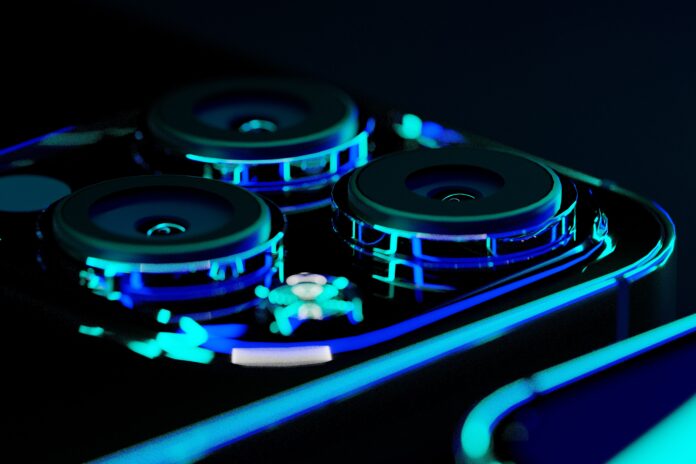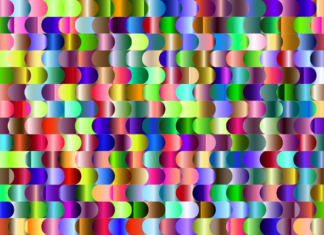In the bustling era of technology and connectivity, the concept of a “Digital Detox” emerges as a sanctuary for the mind—a deliberate pause from the incessant hum of digital devices and online interactions. The term “Digital Detox” encapsulates the idea of stepping away from screens, notifications, and virtual engagements to reconnect with the analog world and rediscover the tranquility of living in the present moment. It’s a journey of intentional disconnection that seeks to restore mental clarity, reduce stress, and foster a healthier relationship with technology.
At its core, the Digital Detox signifies a shift from the constant stimulation of the digital realm to the serenity of the physical world. It involves setting aside a designated period of time to unplug from smartphones, computers, and social media platforms. This intentional break from technology serves as a reset button, allowing individuals to recalibrate their senses, thoughts, and emotions in a space free from digital distractions.
The narrative of the Digital Detox is intertwined with the concept of mindfulness—an awareness of the present moment that extends beyond the confines of screens. Detaching from the digital noise opens up opportunities to engage with surroundings, nature, and face-to-face interactions. This mindful presence enriches experiences and nurtures a deeper connection with the tangible world.
Digital Detox becomes a bridge between virtual reality and real-life experiences—an intersection where individuals shift from curated online personas to authentic selves. In a world where the boundary between online and offline life blurs, the Digital Detox is a deliberate act of reaffirming one’s identity and values beyond the digital façade.
The narrative of the Digital Detox aligns with the concept of mental rejuvenation—an opportunity to recharge the mind and soul. The constant influx of information, notifications, and stimuli can lead to cognitive overload and burnout. A Digital Detox provides the mental space for reflection, relaxation, and the cultivation of creativity.
Digital Detox becomes a catalyst for deeper connections—an experience that fosters genuine interactions with others. Unplugging from screens creates an environment conducive to meaningful conversations, eye contact, and active listening. These analog connections hold the power to enrich relationships and create lasting memories.
The impact of the Digital Detox extends beyond individuals; it influences the dynamics of work, family, and societal well-being. Organizations are recognizing the need for digital balance to prevent employee burnout and enhance productivity. Families are reclaiming quality time by prioritizing face-to-face interactions over screen time. Societies are acknowledging the importance of maintaining mental well-being in an increasingly digital world.
The narrative of the Digital Detox intertwines with the concept of self-care—a practice that nurtures physical, mental, and emotional health. Detaching from screens is an act of self-preservation, a recognition that well-being requires moments of solitude, reflection, and rest. The Digital Detox becomes a sanctuary where individuals can recharge and find solace in silence.
Digital Detox serves as a remedy for information overload—a phenomenon where constant exposure to news, updates, and opinions can lead to overwhelm. By stepping away from the stream of information, individuals regain control over their mental space and reduce the mental clutter that accompanies the digital age.
In conclusion, the Digital Detox is more than a temporary break; it’s a narrative of mindfulness, mental rejuvenation, deeper connections, self-care, work-life balance, information overload, identity reaffirmation, and societal well-being. It’s a conscious choice to disconnect from screens and reconnect with the analog world—an act of self-preservation in the digital age. The Digital Detox is a pathway to mental clarity, presence, and a renewed appreciation for the simple pleasures of life.
Unplugging from Screens:
The primary feature of a Digital Detox involves intentionally disconnecting from digital devices such as smartphones, laptops, and tablets.
Setting Time Limits:
Individuals set specific time limits for their Digital Detox, which can range from a few hours to several days.
Engaging in Offline Activities:
During a Digital Detox, people often engage in activities that don’t involve screens, such as reading physical books, going for walks, practicing hobbies, or spending time with loved ones.
Mindful Presence:
A Digital Detox encourages individuals to be present in the moment, appreciating their surroundings and experiences without the distraction of technology.
Nature and Outdoor Time:
Many Digital Detoxes involve spending time in nature, away from the digital world, to reconnect with the environment and reduce stress.
Social Interaction:
Detaching from screens allows for more meaningful face-to-face interactions, fostering deeper connections with family and friends.
Reflective Time:
A Digital Detox offers an opportunity for self-reflection, allowing individuals to assess their digital habits and their impact on well-being.
Reduced Information Consumption:
Disconnecting from constant news and social media updates can help reduce information overload and associated stress.
Improved Sleep:
Reduced screen time before bed as part of a Digital Detox can lead to improved sleep quality.
Personal Growth:
Taking a break from digital distractions can lead to increased self-awareness, enhanced creativity, and personal growth.
It’s important to note that a Digital Detox is a flexible concept, and individuals may customize their approach based on their goals and circumstances. The above aspects are commonly associated with the practice, but they aren’t fixed “features” in the traditional sense.
In a world characterized by constant connectivity, the notion of a Digital Detox reverberates with a timeless truth—the importance of recalibrating our relationship with technology and embracing the beauty of disconnection. It’s a retreat from the digital realm that offers a respite for the mind, a sanctuary where the cacophony of notifications, alerts, and updates can be replaced by the soothing sounds of nature and the rhythmic pulse of life in its unfiltered form.
The narrative of the Digital Detox is one that dances on the edge of paradox—a deliberate withdrawal from the virtual landscape in order to rediscover the richness of reality. It’s an invitation to peel away the layers of digital veneer that often cloak our interactions and immerse ourselves in the rawness of genuine moments. Detaching from screens isn’t merely an act of retreat; it’s a conscious reawakening to the marvels of the analog world.
In the heart of a Digital Detox lies the art of surrender—an act that requires us to relinquish the illusion of control that technology often bestows. It’s an acknowledgment that, even in the absence of constant connectivity, life goes on. The emails will wait, the social media feeds will continue to scroll, but in the meantime, we can rediscover the joy of looking up at the sky, feeling the earth beneath our feet, and engaging with the physical sensations of existence.
The narrative of the Digital Detox intertwines with the concept of self-awareness—a journey that invites us to examine the impulses that drive our digital behaviors. Are we reaching for our phones out of habit, seeking a momentary distraction, or genuinely connecting with others? A Digital Detox offers a mirror to these impulses, urging us to question the motives that underlie our digital engagements.
Digital Detox becomes an embodiment of intention—an opportunity to consciously choose how we spend our time and energy. By stepping away from screens, we create a space for intentional activities that may have been overshadowed by the allure of virtual distractions. Whether it’s practicing a forgotten hobby, savoring a home-cooked meal, or simply enjoying the company of loved ones, a Digital Detox grants us permission to live with purpose.
The narrative of the Digital Detox resonates with the concept of reclaiming time—a precious resource often squandered in the endless scroll. Detaching from screens allows us to reinvest our time in activities that truly nourish the soul. It’s a chance to dive into books we’ve been meaning to read, engage in creative endeavors, or take leisurely strolls through the neighborhood.
Digital Detox becomes an exploration of silence—an appreciation for the spaces between words, the gaps between thoughts. In a world flooded with information, silence is a gift—one that can lead to introspection, clarity, and a deeper connection with our inner selves. This silent communion with our thoughts can be a profound form of rejuvenation.
The narrative of the Digital Detox resonates with the essence of authenticity—a departure from the curated online personas that sometimes overshadow our true selves. As we step away from digital platforms, we can embrace our imperfections, vulnerabilities, and unfiltered expressions. This authenticity extends beyond the self; it shapes our interactions with others, fostering genuine connections based on shared experiences and genuine emotions.
Digital Detox serves as a reminder of our place in the natural world—a world that often remains unnoticed amidst the flicker of screens. Whether it’s the rustling of leaves, the chirping of birds, or the soothing rhythm of ocean waves, a Digital Detox invites us to reacquaint ourselves with the symphony of nature, grounding us in the beauty of the present moment.
In conclusion, the Digital Detox is a journey into the heart of disconnection—a narrative of surrender, self-awareness, intention, time reclamation, silence, authenticity, and connection with nature. It’s a practice that urges us to look up from our screens and engage with the world in all its unfiltered glory. The Digital Detox is a testament to the enduring human need for balance, mindfulness, and the joy of simply being present.






















